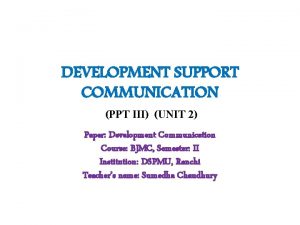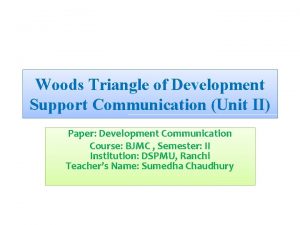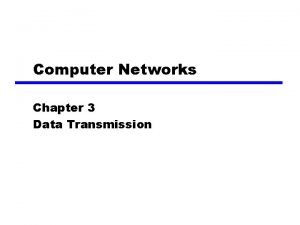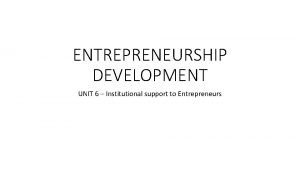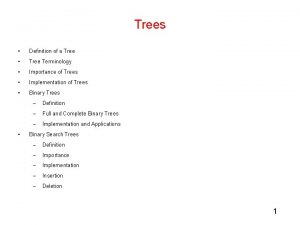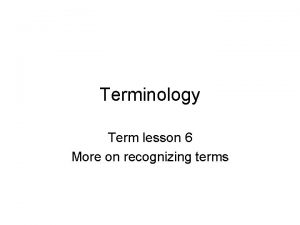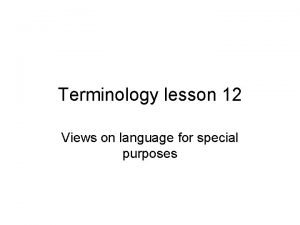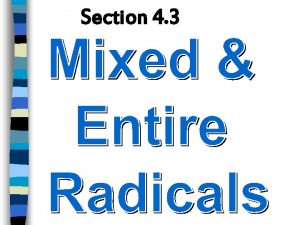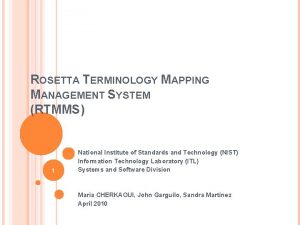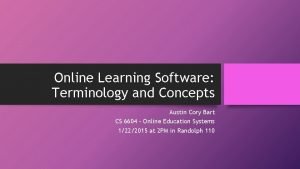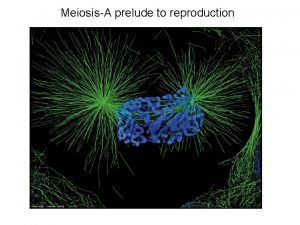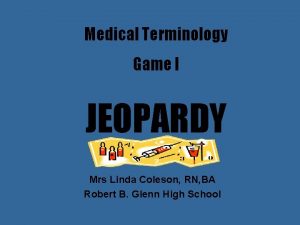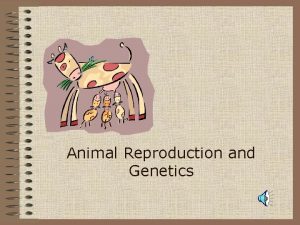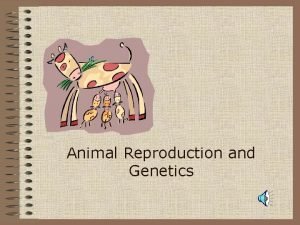DEVELOPMENT COMMUNICATION DEVELOPMENT COMMUNICATION Terminology Development support communication





















































- Slides: 53

DEVELOPMENT COMMUNICATION

DEVELOPMENT COMMUNICATION Terminology: Development support communication. Programme support communication Communication for Development (C 4 D) Participatory Communication for Social change Communication for empowerment Development communication

DEVELOPMENT COMMUNICATION CONTEXT MODERNIZATION vs DEPENDENCY

DEVELOPMENT COMMUNICATION CONTEXT MODERNIZATION Concept based on natural science Biological metaphor – social science Society = organism grows in ‘natural order’ ‘Westernization’== ‘dvpt model’ Blue print for rest of the world

DEVELOPMENT COMMUNICATION CONTEXT MODERNIZATION Western political transformation – Feudalism > Monarchy >Capitalism (Rostow’s FIVE stages of growth) = freedom = ‘laissez-faire’ policy

DEVELOPMENT COMMUNICATION CONTEXT MODERNIZATION 1949 Truman –US President’s development discourse of developed nations expected 3 rd worlds to follow

DEVELOPMENT COMMUNICATION -------, we must embark on a bold new program for making the benefits of our scientific advances and industrial progress available for the improvement and growth of underdeveloped areas. More than half the people of the world are living in conditions approaching misery. Their food is inadequate. They are victims of disease. Their economic life is primitive and stagnant. Their poverty is a handicap and a threat both to them and to more prosperous areas. For the first time in history, humanity possesses the knowledge and skill to relieve suffering of these people. The United States is pre-eminent among nations in the development of industrial and scientific techniques. The material resources which we can afford to use for assistance of other peoples are limited. But our imponderable resources in technical knowledge are constantly growing and are inexhaustible. I believe that we should make available to peace-loving peoples the benefits of our store of technical knowledge in order to help them realize their aspirations for a better life. And, in cooperation with other nations, we should foster capital investment in areas needing development. President Truman’s Inaugural Address – January 20, 1949

Goal of Communication/Media Theories of Communication : Shannon-Weaver: Lasswell (1948): Everett Roger (1962): MODERNIZATION Technology transfer


Lasswell: WHO? SAYS WHAT Refers to the senders/ those taking decision about communication goals and approaches Refers to the content and how to package it (the message) IN WHAT CHANNEL Decides which media to be used TO WHOM WITH WHAT EFFECT Refers to the audience of the communication initiative Evaluates the impact of communication

Roger’s Diffusion of Innovation: 4 main elements that influence the spread of a new idea: the innovation, communication channels, time, and a social system. Individuals progress through 5 stages: knowledge, persuasion, decision, implementation, and confirmation.

Roger’s Diffusion of Innovation:

Roger’s Diffusion of Innovation : Adopter Categories Adopter category Definition Innovators The first individuals to adopt an innovation - willing to take risks, youngest, highest social class, have great financial lucidity, very social, close contact with scientific sources and interaction with other innovators. Early Adopters This is the second fastest category of individuals - Have the highest degree of opinion leadership among the other adopter categories. Early adopters – younger, higher social status, more financial lucidity, advanced education, and are more socially forward

Adopter category Definition Early Majority Adopt an innovation after a varying degree of time. Time of adoption is significantly longer. Slower in the adoption process, above average social status, contact with early adopters. Late Majority Approach an innovation with a high degree of skepticism and after the majority of society has adopted the innovation. Skeptical, below average social status, very little financial lucidity. Laggards Show little to no opinion leadership. Aversion to change-agents, have lowest social status, lowest financial fluidity, be oldest of all other adopters, in contact with only family and close friends, very little to no opinion leadership.

The S Curve

Opinion Leaders typically 1. Have greater exposure to the mass media, 2. More cosmopolitan, 3. Greater contact with change agents, 4. More social experience and exposure, 5. Higher socioeconomic status, and 6. Are more innovative.

Critique: Targets individuals Applied in Behaviour Change Communication (BCC) Assumption : powerful media –’bullet theory’

Mass communication and Mass Media Characteristics : one (source) to many Ø linear / one-way {receiver’s opinion/situation not taken into account} Ø Receiver is omniscient (knows all) vs receiver does not know Ø Unequal (power) relationship Ø Individuals targeted Ø

Development Communication – Context DEPEDENCY Paradigm: South America – Latin America center vs periphery (supply of raw materials/cheap labour) international division of labour periphery to become eco self-reliant International alliance BUT Did not work out Center vs periphery not absolute/not mutually exclusive

DEVELOPMENT COMMUNICATION Paulo Friere: Adult literacy with Brazilian peasants Outcome/impact determined by stakeholders/ not by external actors People as (human) subjects of change/development Friere’s DIALOGUE: 1. Communication between equals 2. Problem-posing education vs Banking system 3. Praxis – action-reflection-action 4. Conscientization –critical consciousness Mythical /Naïve /Culture of silence 5. FIVE values: love-humility-hope-faith-critical thinking

DEVELOPMENT COMMUNICATION The paradigms: Communication for Development: - Participatory Development - Communication for Social change - Communication for empowerment

Characteristics of development communication PARTICIPATORY HORIZONTAL PEOPLE CENTRED ROOTED IN CULTURE COMPATIIBLE WITH MESSAGE AND AUDIENCE

Defining development communication Development Communication" was first coined in 1972 by Nora C. Quebral, who defines the field as "the art and science of human communication linked to a society's planned transformation from a state of poverty to one of dynamic socioeconomic growth that makes for greater equity and the larger unfolding of individual potential”

key questions to consider: ■ What is the development problem to address: information, lack of skills, or social inequality? ■ What notion of culture is inherent in the proposed approach? ■ Is the catalyst or change agent understood? ■ What principles guide the understanding of education/knowlege? ■ Are there active stakeholders or audiences to address? What are their respective roles in the communication process? ■ What messages will be communicated: examples, life experiences or social issues? ■ What is the aim of the change: individual behaviours, social norms, power relations, social or economic structures? ■ How will outcomes be monitored and evaluated? ■ What is the time perspective to achieve the desired changes?

Alternative Media Alternative to what To mass media which are in the clutches of ownership and control Alternative approach in terms of the media which low cost or no cost people and culture centered Centre around the issues of people Message that pose problem and facilitate problem solving Facilitate the transformation and empowerment Communicators arise from the community

Characteristics of alternative media Ongoing critique of existing media structures and processes and messages Giving voice to the voiceless/silent majority To project the unseen To provide access, skill and facilitate in creation/production of alt media text/product

Adbusters, http: //adbusters. org Not-for-profit magazine concerned about the erosion of our physical and cultural environments by commercial forces. Published by the Media Foundation. Alternative Press Center: Directory of Periodicals http: //www. altpress. org/mod/apc_directory/index. php Long list of links to Alternative sources of information (from Annotations -- A Guide to the Independent Critical Press). Alternative Press Review, http: //www. altpr. org/ News, reviews, weekly roundups, and more. Alternative Media Task Force, http: //libr. org/amtf// A subgroup of the American Library Association's Social Responsibilities Round Table working to promote the acquisition and use of alternative information resources in libraries. Alternatives Magazine, http: //www. alternativesmagazine. com/ "Resources for Cultural Creativity. "




Social advertising What it is History Why How Models Critique/ challenges Demo/model on any one of the issue

Participatory approach to communication Guiding Principles: Dialogue Voice Liberating Pedagogy Action-Reflection-Action Role of Media: Community-based Catalysts for social mobilization

Participatory Conmmunication Types of Participation: Passive participation is the least participatory of the four approaches. Primary stakeholders of a project participate by being informed about what is going to happen or has already happened. People’s feedback is minimal or nonexistent, and their participation is assessed through methods like head counting and contribution to the discussion (sometimes referred to as participation by information). ■ Participation by consultation is an extractive process, whereby stakeholders provide answers to questions posed by outside researchers or experts. Input is not limited to meetings but can be provided at different points in time. In the final analysis, however, this consultative process keeps all the decisionmaking power in the hands of external professionals who are under no obligation to incorporate stakeholders’ input.

■ Participation by collaboration forms groups of primary stakeholders to participate in the discussion and analysis of predetermined objectives set by the project. This level of participation does not usually result in dramatic changes in what should be accomplished, which is often already determined. It does, however, require an active involvement in the decision-making process about how to achieve it. This incorporates a component of horizontal communication and capacity building among all stakeholders—a joint collaborative effort. Even if initially dependent on outside facilitators and experts, with time collaborative participation has the potential to evolve into an independent form of participation. ■ Empowerment participation is where primary stakeholders are capable and willing to initiate the process and take part in the analysis. This leads to joint decision making about what should be achieved and how. While outsiders are equal partners in the development effort, the primary stakeholders are primus inter pares, i. e. , they are equal partners with a significant say in decisions concerning their lives. Dialogue identifies and analyzes critical issues, and an exchange of knowledge and experiences leads to solutions. Ownership and control of the process rest in the hands of the primary stakeholders.

Communication for Social Change The process of communication that facilitate the social change

Communication for Empowerment Elements: (Ref. : Chapter 8: Maria celeste Cadiz, pg 150 & 151)

Social advertising What it is History Why How Models Critique/ challenges Demo/model on any one of the issue

Street theatre Often people mix up street theatre and folk media While street theatre uses folk forms it is unique in its form and approach The street theatre is A political weapon to mobile the people for a cause It is interactive and direct It can be improvised every time and message and the medium can be altered according to the response of the people There is no ready made story The situation is carefully studied and the groups comes together in preparing the play

Community radio is a radio station owned, run and maintained by a community. Community radio involves a local station broadcasting for the local people, and involving local people. This medium can be used to initiate local awareness, discussions, and hence lead to development, particularly in developing countries, where other forms of information communication are limited.

Community radio "It is called popular or educational radio in Latin America, rural or local radio in Africa, public radio in Australia and free or associative radio in Europe. All these describe the same phenomenon - gaining voices and democratising communication on a community / scale. Community radio, although taking on diverse forms depending on its surroundings, remains a type of radio made to serve people; radio that encourages expression and participation and that values local culture. Its purpose is to give a voice to those without voices, to marginalised groups and to communities far from large urban centres, where the population is too small to attract commercial or large-scale State radio.

GRAFFITIE Wall painting and wall writing are the low cost and substitute to hoardings Wall painting is a that the design with visuals and test is painted on the wall in thee prominent places. This is yet another transit media Wall writing is still a cheaper medium that any common person in urban and rural areas can use What is so import is to choose the right type of text and visuals and the place considering the limitation of the wall writing and painting

Community video /television Community Television initiative can be considered as one such dynamic tool. Access to television in remote Indian villages has changed substantially in the past few years. And, community television will have many advantages over print media. Programmes, nearly always in the local languages would deal with local issues involving ordinary people so that villagers (even illiterate ones) and town people understand what they are about. The volunteer appointed by a civil society can organize a debate once in a week on localize issues, which in turn would become topics for programmes on the community television. For example, Byrraju Foundation in collaboration with UNESCO has set up one such initiative -Ankuram community TV.

Community video /television Community Television initiative can be considered as one such dynamic tool. Access to television in remote Indian villages has changed substantially in the past few years. And, community television will have many advantages over print media. Programmes, nearly always in the local languages would deal with local issues involving ordinary people so that villagers (even illiterate ones) and town people understand what they are about. The volunteer appointed by a civil society can organize a debate once in a week on localize issues, which in turn would become topics for programmes on the community television. For example, Byrraju Foundation in collaboration with UNESCO has set up one such initiative -Ankuram community TV.

In india SEWA in Gujarat drew the international attention where the women who are the vegetable vendors were trained in community video operation It breaks the myth that only experts can handle television and video production This is an example of alternative use of the elctronic media

New media for develoment The new media such as blog writing, popup , face book, twitter are useful to send the message and seek support especially form the youth Kiosks are set up in the villages for the people to have access to information such whether forecast for fishermen, market rate. This enables people to have informed decisions and bargaining power Telemedicine is an upcoming service delivery through new media

Hand outs HAND OUTS, FLYERS are other low cost media that is distributed or provided as take away materials. This is a handy media cutting across any situation. While going to the village community we need to ensure that it is not print heavy. Using visual and illustrations will help people to read quickly. When the text is heavy people fdont’t read and jut throw on the road

Hoardings Hoarding are the permanent display which is considered as one of the powerful medium to inform and to remind people. With limited text both the visual or color or text it is easier to register. The social messages will also have impact provided there is crowded message and too many message

Transit media Mobile vans Bus panels Mobile exhibitions These strategies are used in a social campaign to inform people. While bole exhibitions help in reaching the unreached areas and directly communicate to the people the bus panel and mobile vans are used as reminder media as people on the transit will have a chance to have the glimpse of these vehicles and recall the original message. Branding the camping is very much necessary to have the recall value.

Sms Campaign It’s a fast way to pass on the information and seek support for specific cause Cheaper and easier to mobilize the support to the people Government has used in seeking people to vote NGO s appeal to people for support – voluntary blood donation Anti corruption campaign built up a momentum with SMS

Small group media Small Group Media is any media used for group facilitations Case studies Riddles Games Exercises Flipcharts Photographs Photo language They are used in group learning process

Approaches in using the GD Group media can from low cost , low cost to using electronic media. They are used as tools to facilitate discussions and identify problems with in the group and seek answer to the problem form the group STEPs 1. Using the tool 2. 3. 4. 5. 6. Asking the group why such thing happened in a given case study or story analysing to the roles , characters and their behaviors Relating to their life situation whether such problem , characters exist amidst them Why such a problem exist in them: who is responsible Can they overcome this problem HOW Strategy to over –who will take the responsibility to fight it out or sort it out

Interpersonal communication is a communication between two persons on a one to one basis. Sometimes it can also between one to two or three like family counseling, talking to a family where close bondage is there and confidentiality is ensured Peer education is a knowledge transfer from one person to another. The knowledge is shared. As a result the particular person is a aware of a problem. IPC or peer education is used as a conscious method of communication to transfer the knowledge give awareness for behavior change

Key References: Participatory Communication : W O R L D B A N K W O R K I N G P A P E R N O. 1 7 0 (Ch. 1 & 2) Communication for empowerment: The practice of participatory communication in development, Maria Celeste H. Cadiz (pg 147 -158) Participatory communication: the new paradigm? Jan Servaes & Patchanee Malikhao The Street theater Alternative Media Articles in ‘Infochange’ Modernisation. pdf: Theories of development: Modernisation vs dependency Social Marketing. ppt Strategic Planning. ppt Note: Other articles are also important!!!
 Signal words
Signal words Development support communication
Development support communication Woods model of communication
Woods model of communication ñ
ñ Unit 18 assessing children's development support needs
Unit 18 assessing children's development support needs Institutions supporting entrepreneurship
Institutions supporting entrepreneurship Chart terminology
Chart terminology Staggered intermittent fillet welding symbol
Staggered intermittent fillet welding symbol Chapter 11 medical terminology
Chapter 11 medical terminology Critical lens meaning
Critical lens meaning Tunnel terminology
Tunnel terminology Adjacent side
Adjacent side Define tree with example
Define tree with example Medical terminology skeletal system
Medical terminology skeletal system Body is erect
Body is erect Synonymy
Synonymy Terminology of folds
Terminology of folds Lesson 12 medical terminology
Lesson 12 medical terminology Concepts and terminology
Concepts and terminology U4ilui-din8 -site:youtube.com
U4ilui-din8 -site:youtube.com Entire radical examples
Entire radical examples Sampling terminology
Sampling terminology Rosetta terminology mapping
Rosetta terminology mapping Retaining wall
Retaining wall Social work terminology for case notes
Social work terminology for case notes Curtis rad
Curtis rad Pleur suffix
Pleur suffix Tresia medical term
Tresia medical term Midcarpal prefix and root
Midcarpal prefix and root Example of alliteration
Example of alliteration Plant tissue culture terminology
Plant tissue culture terminology Khan academy medical terminology
Khan academy medical terminology Nutrition care process terminology
Nutrition care process terminology What is masthead in newspaper
What is masthead in newspaper Terminology of mobile ip
Terminology of mobile ip Meiosis terminology
Meiosis terminology Building medical terms
Building medical terms Identify and define the suffix in the term cardiomalacia
Identify and define the suffix in the term cardiomalacia Medical terminology ophthalmology
Medical terminology ophthalmology Esis medical term examples
Esis medical term examples Scanty urination medical terminology
Scanty urination medical terminology Hepa medical term prefix
Hepa medical term prefix Gastroenteritis suffix
Gastroenteritis suffix Medical terminology lesson plans
Medical terminology lesson plans Basic medical terminology list
Basic medical terminology list Suffix phylaxis
Suffix phylaxis Cardi
Cardi Leuko medical term
Leuko medical term Prefixes and suffixes jeopardy
Prefixes and suffixes jeopardy Radiology medical terminology breakdown
Radiology medical terminology breakdown Accented syllable in retrogastric
Accented syllable in retrogastric Chapter 5 medical terminology quiz
Chapter 5 medical terminology quiz Consonant medical terminology
Consonant medical terminology The combining form poli/o means gray
The combining form poli/o means gray

